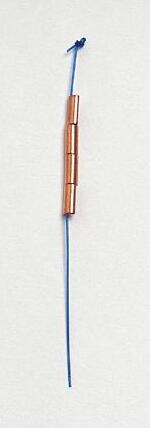| name | Copper IUD (Intrauterine Device) |
| classification | Long-acting reversible contraceptive (LARC) |
| pharmacokinetics | The copper IUD does not directly affect systemic hormones. Its mechanism of action primarily involves local effects within the uterus, creating an inflammatory environment hostile to sperm and preventing fertilization. Copper ions released from the device act on sperm motility and viability. |
| suggested dosage | Single placement; no daily, weekly, or monthly dosage. Duration of effectiveness varies by model, typically 3-10 years. |
| indications | Prevention of pregnancy. |
| safety in pregnancy | **CRITICAL:** Remove immediately if pregnancy occurs. Not intended for use in pregnancy. |
| safety in breastfeeding | Generally considered safe; no known negative impacts on milk production or infant health. |
| side effects | | 1 | Cramping and/or bleeding in the first few months after insertion | | 2 | Increased menstrual flow or length | | 3 | Spotting or bleeding between periods | | 4 | Pelvic pain or discomfort | | 5 | Infection (rare) | | 6 | Expulsion of the IUD (rare) |
|
| alternatives | |
| contraindications | | 1 | Known or suspected uterine abnormalities (e.g., fibroids, polyps) | | 2 | History of pelvic inflammatory disease (PID) | | 3 | Active uterine infection or inflammation | | 4 | Unexplained vaginal bleeding | | 5 | Known allergy to copper or any components of the IUD |
|
| interactions | No known drug interactions, however, some medications may affect bleeding patterns. Consult with a healthcare provider if taking other medications. |
| warnings and precautions | | 1 | Low risk of expulsion, perforation, or infection. | | 2 | Screen for STIs and infections prior to placement. | | 3 | Report pain or discomfort promptly to physician. | | 4 | Follow-up visit essential to ensure proper placement and functioning, and assess for complications. | | 5 | Placement by trained healthcare professionals. |
|
| additional information | | patient age | 25 years | | patient weight | 70 kg | | additional notes | Patient age and weight are not directly relevant to IUD use. Individual medical history, current health status, and overall well-being should be considered when assessing suitability. |
|

